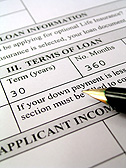Five Ways to Get Out of a Car Lease Before the End
Even if it seems easy to walk away from a lease agreement since you are only renting, think again. A car lease is a long term agreement where the lessee is committed to pay the balance until it reaches the residual value. When talking about long term commitment, little differentiates a lease from a loan.
There are many ways to exit a car lease early, but some of them are less consequential than others. Here are 5 ways to break a car lease before the end of the term, starting with the most beneficial for the lessee:
5 ways to break a car lease
-
Lease Transfer or Swap
The swap consists of transferring a lease agreement, as is, to another party. This new lessee will takeover the payments and become responsible of the vehicle. Ending a lease early with this method has the lowest cost, because only the administrative fees are included in the transaction. The original lessee can then walk away from the lease agreement, avoiding a possible major financial hit, without any scratches on their credit bureau.
There is a disadvantage to this option if there was a down payment on the original agreement. The cash down will be transferred to the second lessee, who will enjoy lower monthly payments, and the first lessee will lose that money from the original transaction.
-
Early Lease Buyout
There is always the option in a car lease to buyout the lease early from the dealership or the financial institution. The price of the purchase is the outstanding balance, the residual value and sometimes the applicable taxes. It is possible that the lessee did accumulate equity and the vehicle is worth more than what it cost to buy out. In that case, the lessee wins on such a transaction by selling it on the market after. It will cover the purchase costs and the lessee may make a profit.
However, this situation rarely happens at the beginning of the term, because the vehicle depreciates too quickly in the first two years. Gaining positive equity on the vehicle in the case of a car lease mostly happens towards the end, or doesn't happen at all if the residual value is set too high. You can always try to predict a gain or a loss in time if you calculate the depreciation of a vehicle vs. its outstanding balance.
-
Changing Car Lease
You can ask to terminate the lease with your present car by changing it for a new one and starting a new car lease. This option isn't accomplished by dismissing the situation on the first car. The amount left to pay on the first lease, i.e. the capital balance, the residual value and the taxes, will be taken in consideration.
If the market value of the vehicle is lower than what is left to pay on the lease agreement, the difference will be transferred to the new lease, which will have the opposite effect of cash down. This means the price of the new vehicle will be increased with the negative equity originating from the old vehicle. The lessee will end up paying the depreciation on two vehicles.
-
Returning the Vehicle
You could always bring back the vehicle to the dealership or the financial institution. However, to fulfill your obligation and avoid damages on your credit bureau, you have to continue making your monthly payments until the end, even if you don't possess the car, and pay the fees of excess mileage and excessive damages. This option forces you to pay for a service that you don't take advantage of, which can be very frustrating.
-
Repossession
This is the option with the lowest financial cost in short term but with the heaviest consequences. You simply stop your payments and the company recuperates the automobile, or you return the vehicle and walk away. The dealership or the financial institution will take necessary procedures to collect the missing payments, but you decide simply not pay.
This approach will burn your credit file, and it will be very difficult after to find another car lease with any institutions. If you end up being accepted with another institution after the repossession, you will be considered a second chance credit applicant (if this was the first time) and interest rates will be set very high. The money you saved by not paying the vehicle will reappear later with higher interest fees on new car lease.
This list enumerates different ways to end a car lease early, but there is always the option to keep the car until the end of the contract, which can actually be lower in cost than other options. Why? The vehicle depreciates majestically in the first two years, but the devaluation on the following years is not as severe and the market value of the vehicle will get closer to the outstanding balance. At this point, if you keep the vehicle until the end of the term, the negative equity will be lower or become positive, and therefore will give you better options.
What is the Best Option for You?
If you insist on closing your lease early, the swap or lease transfer is considered the best option in the majority of the cases, and it is the most popular way. However, if you have a positive equity on your vehicle, it is better to buyout the lease early or apply it as a cash down on a new car lease, otherwise you will lose this advantage in the swap. Bottom line, you just have to analyze your situation and weight the three first options, and avoid as much as possible the last two approaches.




